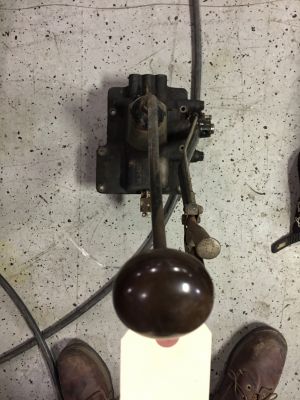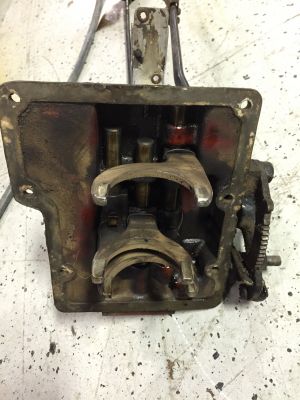- Home
- About Us
- Join/Renew
- Member Benefits
- Member Pages
- Log In
- Help
- Museum Store
Hello Pierce Arrow Society.
I am Craig S. Nelson, retired Navy and McPherson College Senior.
As many know from our prior engine post, we have commenced the disassembly and documentation of our 1930 Model B roadster and 1930 Model C sedan. We had these cars donated over 25 years ago.
We intend on building the Model B roadster to 100% authentic and period correct condition, without original parts to our car. The goal is to showcase the car to meet the highest judging standards possible for this Model B roadster. We do have the 1930 parts book for A/B/C models.
Our cars were not in original condition. Here’s the inventory of what we have right now:
– 1930 Model B Roadster body R-134-59, C chassis serial number 1003500 with 134″ wheelbase, A engine 300523
– 1930 Model C sedan, C chassis serial number 1003853 with 134″ wheelbase, C engine 102558
The question comes to the transmission and differential.
The B roadster transmission was bolted to the A engine and is indeed a 4 speed. The chassis has a 4.583 rear end. Pictures below.
The C sedan transmission was bolted to the C engine and appears to be a 4 speed. The chassis also has the 4.853 rear end. Pictures below.
1) What is the most correct transmission for our B roadster? Both our transmissions appear to be 4 speeds. The markings on both cases are 7-22-30 / 319 B 7 / 695B / 634B Shifter. What do those markings represent? Should we keep these transmissions or pursue the 3 speed versions? The parts book appears to list a 3 speed diagram only and no 4 speed diagram is available.
2) What is the most correct rear end for our B roadster? Both our rear axles appear to be 4.583. Should we keep these rear axles or pursue the lower ratio 4.10 versions?
3) Was wheelbase measured from center point to center point on each wheel bub in 1930 like it is today?
We would like the best possible recommendations for what direction to go with our drivetrain. All transmission pictures are posted below
Please reply here or contact me at [email protected] / (619) 944-8971 – Cell.
Thanks.
Transmission #1 off Model A engine
Transmission #1 off Model A engine
Transmission #1 off Model A engine
Transmission #1 off Model A engine
Shifter Handbrake off Model A engine

Shifter Handbrake off Model A engine

Shifter Handbrake off Model A engine

Transmission #2 off Model C engine
Transmission #2 off Model C engine
Transmission #2 off Model C engine
Transmission #2 off Model C engine
Model C rear axle. The rear axle from the other drivetrain is the same. We have two of these.
Once we have verification of what direction to go, we will take the proper steps. We are open to donations, trades, or direct sales.
I will speak only to the transmissions. The original 4 speed (granny low, low, intermediate or what we would call ‘second’, and high)had syncromesh second and high gears. the gears were in constant mesh but were shifted by means of a moveable shaft from one to the other. This enables the trained driver to shift back and forth between high and ‘second’ without depressing the clutch! A great help to someone driving in mixed traffic.
This box is loved by those who know how it works, and hated and removed by those who were uneducated in it’s design. It was commonly exchanged for a regular 3 speed or a free wheeling unit.
So many ‘C’ cars were produced that the factory could not get enough of
the syncromesh 4 speed unit, so they contracted out a second 4 speed but it did not have the syncromesh gears – you must use the clutch in changing all gears.
from the photos you show I think that you have the replacement type, and the one that was used to replace the original by those who hated the first one.
The reason it that it was hated is that the mechanics who disassembled, cleaned and reassembled these boxes did not know that the gears had to matched together EXACTLY, which is done by small marks on the gears. An improperly assembled unit will cause broken teeth, or at least a terrible grinding noise. QED
William,
Thanks for the information! Very interesting.
